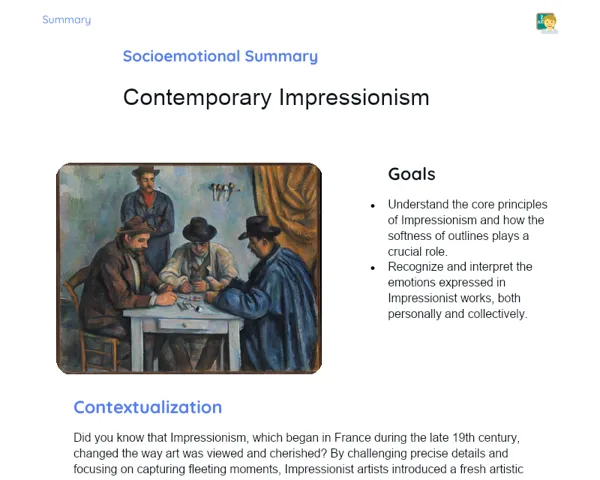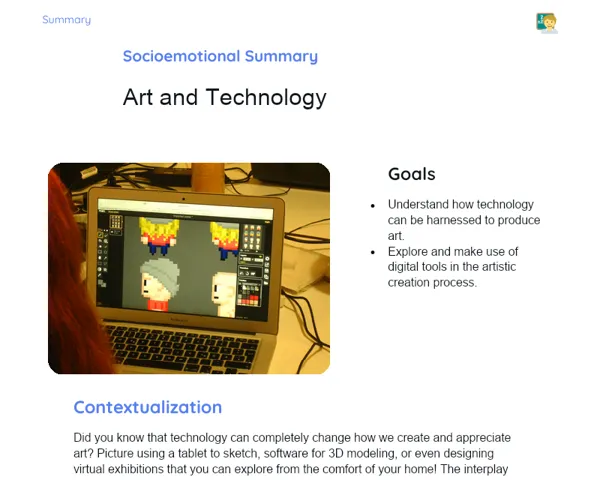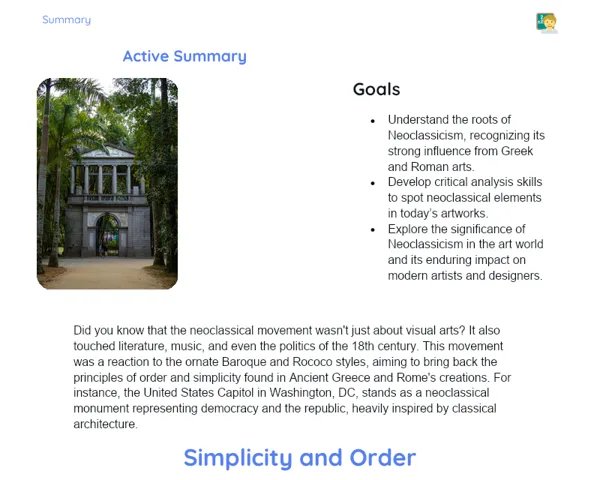Goals
1. Understand Baroque art as a representation of Christian values in today's world.
2. Analyze how the Baroque artistic movement spread from Europe to America.
3. Identify the distinctive aesthetic and technical features of Baroque art.
4. Recognize the influences of Baroque in today’s artistic expressions.
Contextualization
Baroque art, which emerged in the late 16th century, is an artistic movement known for its opulence, emotional intensity, and intricate details. Initially developed in Europe, particularly in Italy, this form of art has deep ties to the Catholic Church, serving as a medium to express Christian faith and inspire awe among the devotees. During the period of colonization, the Baroque style made its way to America, where it fused with indigenous cultures, leading to unique works rich in symbolism. A prime example is the Church of St. Francis of Assisi in Ouro Preto, Brazil, which beautifully illustrates Brazilian Baroque infused with local influences.
Subject Relevance
To Remember!
Aesthetic Characteristics of Baroque Art
Baroque art is renowned for its grandeur, emotional drama, and rich detail. Artwork from this period frequently employs strong contrasts of light and shadow (chiaroscuro), dynamic movement, and intense emotional expressions to create a sense of vitality and connect with viewers. These visual elements are crafted to elicit powerful emotional reactions and often serve to honor religious or grand themes.
-
Light and shadow contrast (chiaroscuro): A technique that adds depth and drama to the artwork.
-
Intense movement: Artworks that capture a fleeting moment of action.
-
Emotional expressiveness: Figures and narratives that convey strong, relatable emotions.
Religious Influence in Baroque Art
Baroque art was heavily influenced by the Catholic Church, which employed it as a means to inspire and instruct the faithful during the Counter-Reformation. Religious themes abound in Baroque art, often depicting biblical scenes, saints, and the life of Christ. The scale and emotional weight of these artworks were intended to strengthen public faith and devotion.
-
Religious themes: Representations of biblical narratives, saints, and the life of Jesus.
-
Aim to inspire and educate: The utilization of art to promote Christian beliefs.
-
Emotional impact: Art designed to provoke a profound emotional response, reinforcing devotion.
Spread of Baroque in Latin America
The Baroque style found its way to Latin America during the colonization era. This style blended seamlessly with local traditions, creating a symbiotic combination of European and indigenous elements. Noteworthy examples include the churches and cathedrals that seamlessly bring together Baroque magnificence with local motifs, creating a rich cultural and artistic fusion.
-
Combination of influences: A blend of European and indigenous elements.
-
Religious architecture: Churches and cathedrals showcasing Baroque features.
-
Rich symbolism: Artworks that reflect a vibrant cultural tapestry.
Practical Applications
-
Art Restoration: Experts utilize Baroque techniques to restore artworks and architecture from this period, safeguarding our cultural heritage.
-
Museum Curation: Curators arrange exhibitions spotlighting the historical and aesthetic significance of Baroque art, educating the public about its ongoing relevance.
-
Contemporary Design: Modern designers draw inspiration from Baroque methods and visual traits to craft contemporary pieces that evoke the grandeur and intricacy of the era.
Key Terms
-
Chiaroscuro: A technique of light and shadow interplay that adds depth and emotion.
-
Counter-Reformation: A movement instigated by the Catholic Church to counter the Protestant Reformation that profoundly influenced Baroque art.
-
Grandeur: A hallmark of Baroque art that accentuates the scale and emotional resonance of the pieces.
Questions for Reflections
-
How does the application of light and shadow in Baroque art shape our interpretation of these works?
-
In what ways did Baroque art function as a tool for the Catholic Church during the Counter-Reformation?
-
What are the primary differences and similarities between European Baroque and Latin American Baroque styles?
Practical Challenge: Creating a Modern Baroque Work
To reinforce your comprehension of Baroque art and its modern applications, you will design a piece inspired by Baroque using various techniques.
Instructions
-
Form groups of 3 to 4 members.
-
Select a religious or emotional theme relevant to Baroque art.
-
Utilize materials such as magazines, newspapers, scissors, glue, colored papers, tablets, or computers for digital creation.
-
Incorporate contrasts of light and shadow, movement, and expressiveness in your pieces.
-
Draft a brief description (3-5 sentences) explaining how your work reflects Baroque elements.
-
Organize a mini-exhibition in the classroom, where each group will present their work and its description.



